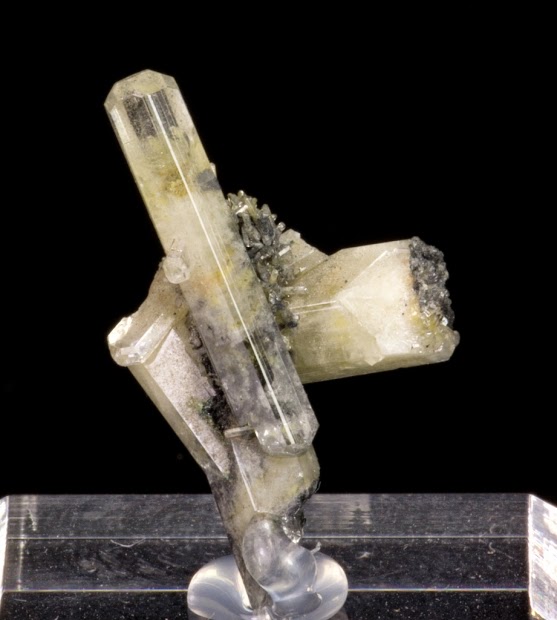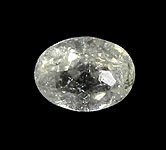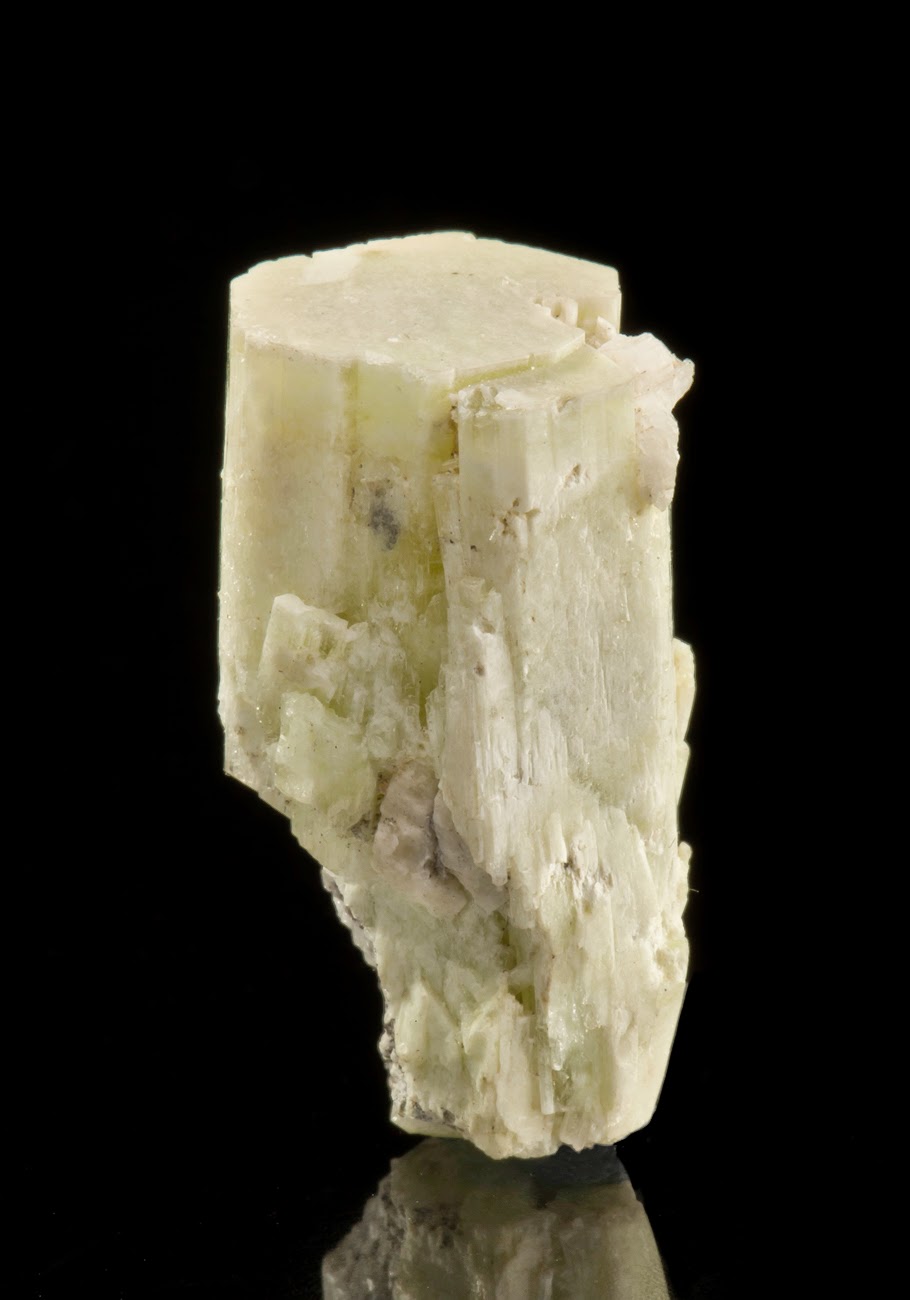
Chemical Formula: K2Ca4Al2Be4Si24O60·H2O
Locality: Val Milar, Switzerland.
Name Origin: Named after its locality.
Milarite is a fairly rare mineral and yet it is one of the two minerals that gives its name to a somewhat large group of silicates, namely the Milarite – Osumilite Group. The group is composed of similar cyclosilicate minerals that are all very rare and very obscure with the exception of milarite, osumilite and sugilite. The primary structural unit of the minerals in the Milarite – Osumilite Group is a most unusual double ring, Si12O30. Normal rings of cyclosilicates are composed of six silicate tetrahedrons; Si6O18. The double rings of the Milarite – Osumilite Group minerals are made of two normal rings linked together by sharing one oxygen in each of the tetrahedrons. The structure is analogous to the dual wheels of a tractor trailer.
Milarite crystals are generally small, but can make excellent micromounted specimens. They are often colored a muted green or yellow and form good prismatic hexagonal crystals. Milarite forms as a primary mineral in granitic pegmatites and syenites, hydrothermal veins and alpine clefts. It has been cut as a gem, but is too rare, small and its general translucency that makes it only suitable to be cut for collectors of rare gemstones. Milarite is named for its locality of first discovery; Val Giuf (Val Milar), Tavetsch, Grischum, Switzerland. Milarite has been known as giufite and giuffite, but milarite is the only accepted name now. Good mineral specimens are available and can be quite attractive, but mostly under magnification.
History
Discovery date : 1870
Town of Origin : VAL GIUV, TAVETSCH, GRISONS
Country of Origin : SUISSE
Optical properties
Optical and misc. Properties : Transparent to translucent
Refractive Index: from 1,52 to 1,55
Physical Properties
Cleavage: {0001} Imperfect, {1120} Imperfect
Color: Colorless, White, Greenish white, Yellowish white.
Density: 2.52
Diaphaneity: Transparent to translucent
Fracture: Brittle – Generally displayed by glasses and most non-metallic minerals.
Hardness: 6 – Orthoclase
Luminescence: Fluorescent, Short UV=bluish white.
Luster: Vitreous (Glassy)
Streak: white
Photos :












